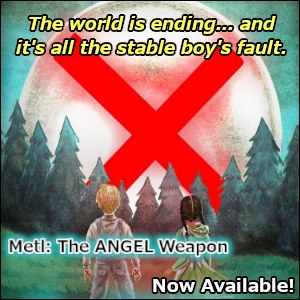Writing the beginning of a story is by far the hardest part.
Let’s go over 4 things to keep in mind when starting your own, then practice by writing some beginnings together!
During the last stream, a subscriber requested that we go over how to begin a story.
You can watch the video here to or scroll down for notes/highlights.
How to Write the Beginning of a Story
- Writing the beginning of the story is the hardest part:
- It’s stressful, since it’s the first part of your story that you have to actually write
- Plus you have to hook the reader
- PLUS you have to give them enough info to understand what’s going on
- BUT not so much that you overwhelm them!
- It’s stressful, since it’s the first part of your story that you have to actually write
- Because of all that, it can be tempting to begin right in the middle of heart-pounding action to hook the reader, or to give the reader all the information they need to know
- But those are two of the worst ways to start a story: if there’s too much action and the reader doesn’t understand who is doing it or why, they won’t care; if there’s too much information, it will bore them too
- So how DO you start a story? Let’s go over four things to keep in mind!
#1. Set the Scene
- Until you show the reader where/when your story is taking place, they won’t know, everything will be happening in a void, so give it to them clearly in the first/second paragraphs
- But! Don’t just give a list of details, have fun with it and show the location/time in unique and interesting ways
Example: Hunger Games by Suzanne Collins
When I wake up, the other side of the bed is cold. My fingers stretch out, seeking Prim’s warmth but finding only the rough canvas of the mattress. She must have had bad dreams and climbed in with our mother. Of course, she did. This is the day of the reaping.
- This opening is doing a LOT of work to set the scene: we see a lot of where it takes place: a “bed,” it’s “cold,” she has a “rough canvas” mattress
- We also get a hint of when it takes place with the “reaping,” implying a time different from our own
- Note how it’s not just a list of surrounding items, everything plays a role in what’s happening, the main character interacts with it all
#2. Set the Tone
- It’s just as important to show how your character feels and what the reader is supposed to feel, to bond the reader with the character/story right from the start
- But! Don’t just tell the reader how to feel, show them with unique/fun details
Example: Name of the Wind by Patrick Rothfuss
It was night again. The Waystone Inn lay in silence, and it was a silence of three parts.
The most obvious part was a hollow, echoing quiet, made by things that were lacking. If there had been a wind it would have sighed through the trees, set the inn’s sign creaking on its hooks, and brushed the silence down the road like trailing autumn leaves. If there had been a crowd, even a handful of men inside the inn, they would have filled the silence with conversation and laughter, the clatter and clamor one expects from a drinking house during the dark hours of the night. If there had been music… but no, of course there was no music. In fact there were none of these things, and so the silence remained.
- This opening hits the reader hard with its somber tone, and it does it in a way that’s a pleasure to read
- Note how it doesn’t outright tell us it’s sad, rather it makes us feel that way with its imagery
- There are so many unique expressions here, try to do the same with your own writing, using descriptions you’ve never heard before yourself
#3. Small Action
- Starting a story in the middle of an intense action scene isn’t usually the best idea, but some sort of little action is necessary
- Nobody wants to read a beginning where a character is just sitting around doing nothing, so make sure something is happening
Example: Throne of Glass by Sarah J. Maas
After a year of slavery in the Salt Mines of Endevior, Celaena Sardothien was accustomed to being escorted everywhere in shackles and at sword point. Most of the thousands of slaves in Endovier received similar treatment — though an extra half dozen guards always walked Calaena to and from the mines. That was expected by Adarlan’s most notorious assassin. What she did not usually expect, however, was a hooded man in black at her side — as there was now.
He gripped her arm as he led her through the shining building in which most of Endovier’s officials and overseers houses were. They strode down corridors, up flights of stairs, and around and around until she hadn’t the slightest chance of finding her way out again.
At least, that was her escort’s intention. As if she’d lose her bearings that easily. She might’ve been insulted if he wasn’t trying so hard.
- This story could’ve started with the assassin getting caught, or an escape attempt from the salt mines, but that would’ve likely been too much
- Instead, starting with a small action, her being escorted through a castle as a prisoner, is plenty intriguing and doesn’t overwhelm the reader
- The best small actions to begin with are the ones that lead into a big action in the first chapter
#4. Hook them with the Voice
- A lot of writers worry about hooking the reader at the beginning of the story with action or mystery
- But the best hook a story can have is a character’s voice, making the words on the page sound like something a real person is telling us, rather than words printed on paper
Example: Gone Girl by Gillian Flynn
When I think of my wife, I always think of her head. The shape of it, to begin with. The very first time I saw her, it was the back of the head I saw, and there was something lovely about it, the angles of it. Like a shiny, hard corn kernel or a riverbed fossil. She had what the Victorians could call a finely shaped head. You could imagine the skull quite easily. I’d know her head anywhere.
- This is a book about a man whose wife goes missing and he’s the number one suspect… and yet it starts with a paragraph about him describing her head!
- It hooks the reader not with action or mystery, but with the voice: how can you not want to read more about a character who describes their wife’s head as a “riverbed fossil?”
- Whatever your character’s personality is, make it clear on page one: a good voice turns a story from one that is read to one that is listened to, like you’re sitting with a friend as they weave you a juicy tale
In Summary!
- The best openings use some combination of all four elements
- None of these openings were written perfectly on their author’s first tries, and neither will yours
- It takes MANY rewrites to find the balance between too much and too little at the opening, so don’t be afraid to get your opening wrong and try a bunch of different versions!
- Eventually, after getting enough feedback and rewriting the opening five or more times, you’ll hit the right balance
After that, chat voted on a prompt that we would practice writing the beginning for. They voted on these two: (1) mention a cat, shimmer, unicorn, and a faerie, and (2) must touch on themes of isolation.
It was on the fifteenth day of isolation that turning Mittens into a unicorn felt like a good idea. My fluffy white cat watched me with interest as I cut construction paper into a cone, slathered it with a glue stick, and sprinkled shimmering glitter on it.
But once I stapled on the rubber band to the sides, I think Mittens smelled my mischievous-pixie intentions and made a mad dash up the stairs. That was her first mistake. There were no exits on the second floor of the townhouse.
I cornered her in my bedroom and closed the door, slowly creeping down with the sparkling cone in my hands. Her eyes darted around, hoping for an escape to appear, but there was no future for her except unicorn.
I plopped the inverse cone-of-shame onto her head and strapped it under her chin, standing back to observe the fruits of my greatest social interaction in weeks. Mittens just meowed sadly and pawed at the sequins. I knelt beside her, stroking her back, cooing reassurances. She wouldn’t have to stay like this for too much longer.
Her sparkling wings that would make her into a fully-fledged faerie were waiting downstairs after all.
But as I scooped up Mittens, a knock came at the door.
Be sure to check out the video for some BAD examples of how that opening could have gone!
If you want to join us and help write a story by trolling in chat, or share your own writing for feedback, then we’d love to have you join us on Twitch.
And you missed the stream, you can still watch them on the YouTube channel or watch the full stream reruns.
Hope to see you next time, friend! Featured image: Pakutaso
Featured image: Pakutaso
